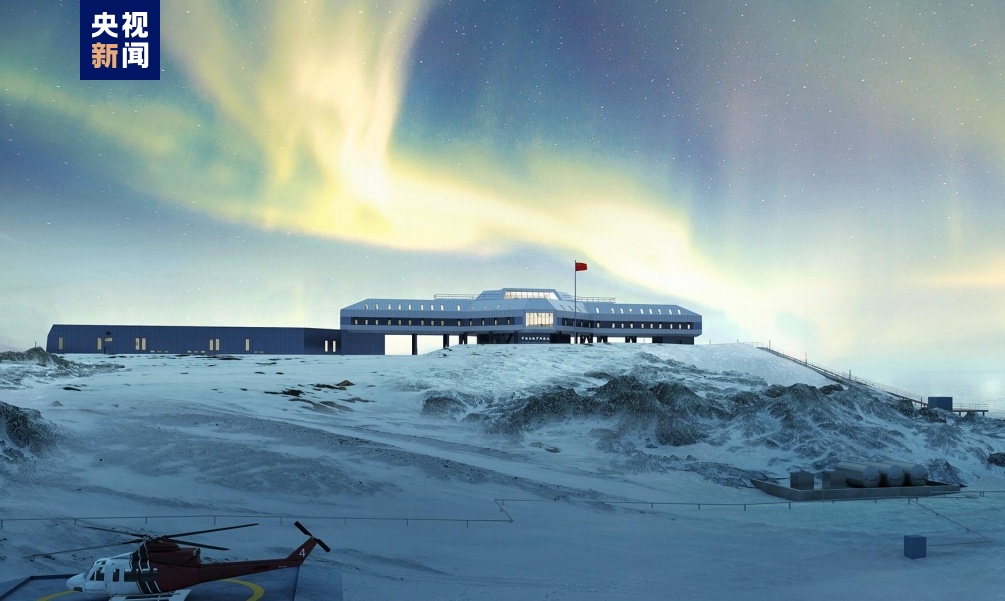On November 1st, the 40th Chinese Antarctic Expedition, organized by the Ministry of Natural Resources, departed from China. This inspection lasted for over 5 months and will be returned in April 2024.
The 40th Antarctic Expedition consisted of over 460 people from over 80 units. For the first time, the inspection mission was supported by three ships. The "Xuelong" and "Xuelong 2" ships departed from Shanghai, mainly carrying out scientific investigations, personnel transportation, and logistics supply tasks; The "Tianhui" cargo ship departed from Zhangjiagang, Jiangsu, mainly responsible for the transportation of materials for the construction of the new scientific research station.
The survey will focus on three ships ("Xuelong", "Xuelong 2" and "Tianhui" merchant ships), five seas (astronaut sea, Amundsen sea, Ross sea, the waters adjacent to the Antarctic Peninsula, and the waters of Pulitzer Bay), and five stations (Kunlun, Zhongshan, Great Wall, Mount Taishan, and Ross sea hub stations). Among them, the construction of a new station in the Ross sea is the biggest highlight of the survey.
China's fifth research station in Antarctica - the Ross Sea New Station
"New Station is the first perennial scientific research station established in China in the new era, and the third perennial research station after the Great Wall Station and Zhongshan Station. It is also China's fifth research station in Antarctica," said Long Wei, Deputy Director of the Polar Exploration Office of the State Oceanic Administration.
The new station is located in the coastal area of the Ross Sea, with a building area of 5244 square meters. After completion, it is expected to accommodate 80 summer inspectors and 30 winter inspectors. It will carry out observation, monitoring, and scientific research on the atmospheric environment, marine basic environment, and biological ecology in multiple circles and disciplines.
Sun Bo, Secretary of the Party Committee of the China Polar Research Center, introduced that the main design of the new station is in the shape of the Southern Cross, and the design concept is derived from the navigation of the Southern Cross used by Chinese navigator Zheng He during his voyages to the West.


On November 1st, the 40th Chinese Antarctic Expedition, organized by the Ministry of Natural Resources, departed from China. This inspection lasted for over 5 months and will be returned in April 2024.
The 40th Antarctic Expedition consisted of over 460 people from over 80 units. For the first time, the inspection mission was supported by three ships. The "Xuelong" and "Xuelong 2" ships departed from Shanghai, mainly carrying out scientific investigations, personnel transportation, and logistics supply tasks; The "Tianhui" cargo ship departed from Zhangjiagang, Jiangsu, mainly responsible for the transportation of materials for the construction of the new scientific research station.
The survey will focus on three ships ("Xuelong", "Xuelong 2" and "Tianhui" merchant ships), five seas (astronaut sea, Amundsen sea, Ross sea, the waters adjacent to the Antarctic Peninsula, and the waters of Pulitzer Bay), and five stations (Kunlun, Zhongshan, Great Wall, Mount Taishan, and Ross sea hub stations). Among them, the construction of a new station in the Ross sea is the biggest highlight of the survey.
China's fifth research station in Antarctica - the Ross Sea New Station
"New Station is the first perennial scientific research station established in China in the new era, and the third perennial research station after the Great Wall Station and Zhongshan Station. It is also China's fifth research station in Antarctica," said Long Wei, Deputy Director of the Polar Exploration Office of the State Oceanic Administration.
The new station is located in the coastal area of the Ross Sea, with a building area of 5244 square meters. After completion, it is expected to accommodate 80 summer inspectors and 30 winter inspectors. It will carry out observation, monitoring, and scientific research on the atmospheric environment, marine basic environment, and biological ecology in multiple circles and disciplines.
Sun Bo, Secretary of the Party Committee of the China Polar Research Center, introduced that the main design of the new station is in the shape of the Southern Cross, and the design concept is derived from the navigation of the Southern Cross used by Chinese navigator Zheng He during his voyages to the West.


